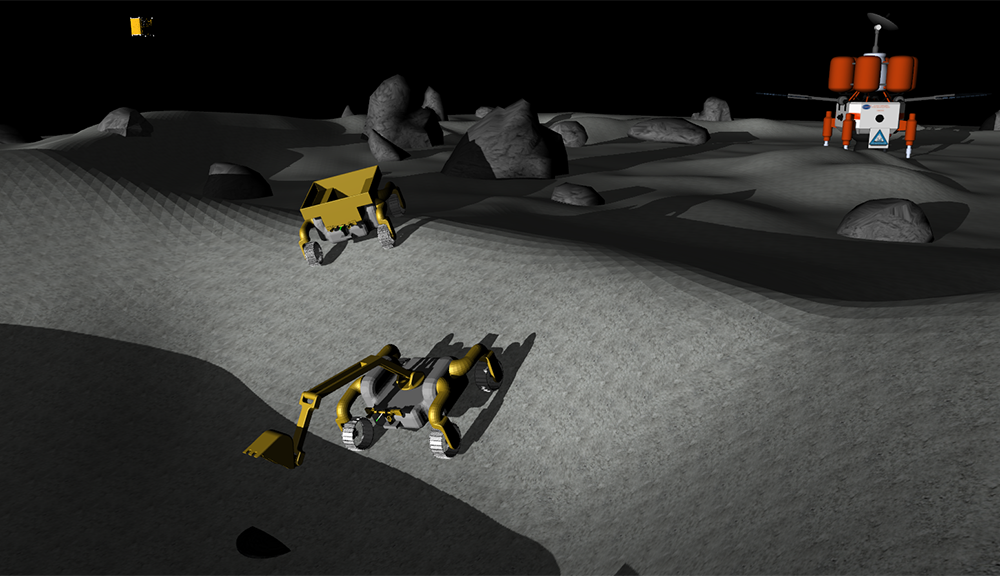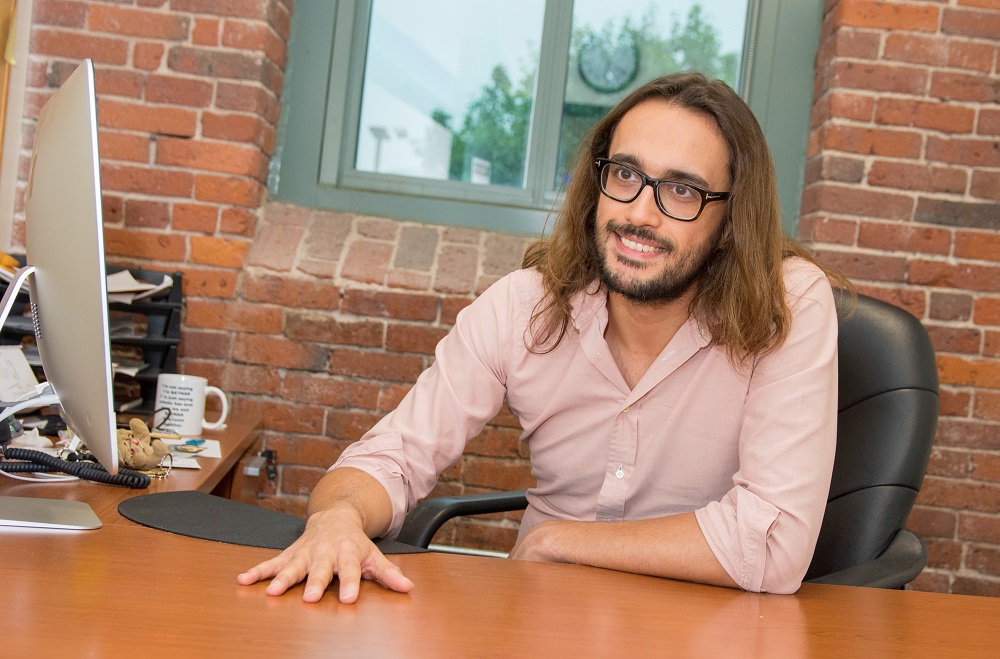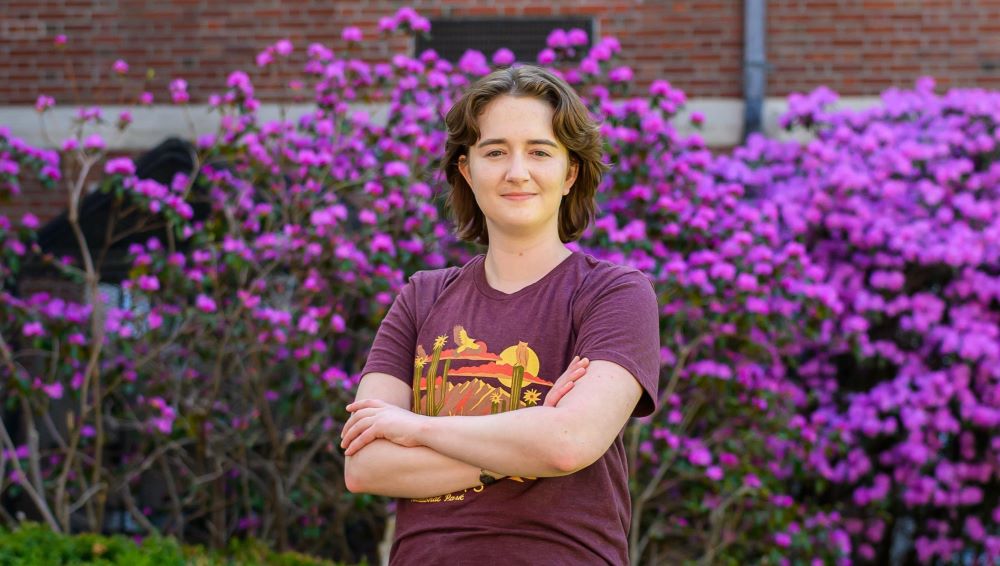Fourteen teams to vie for prize of nearly $1.5 million
 More than a dozen teams of citizen inventors from across the globe will once again compete for a purse of nearly $1.5 million on June 11-13 on the WPI campus for the 2014 NASA-WPI Sample Return Robot Challenge.
More than a dozen teams of citizen inventors from across the globe will once again compete for a purse of nearly $1.5 million on June 11-13 on the WPI campus for the 2014 NASA-WPI Sample Return Robot Challenge.
The challenge: Design and develop the next generation of robots to explore the landscapes of other worlds.
Two years ago, WPI was the first university selected as host and manager – officially designated as “Allied Organization” – for a NASA Centennial Challenge event. The Centennial Challenge program was created in 2005 by the space agency to engage citizens, students and small businesses in the development of new technological solutions for NASA and the nation.
NASA awarded $5,000 to Team Survey of Los Angeles last year for successfully completing Level 1 of the NASA-WPI Sample Return Robot Challenge. NASA expects the 2014 event will advance the progress of the competition and include new and returning competitors.
“Last year, one team collected the $5,000 prize for completing Level 1, but several teams came very close,” said Sam Ortega, program manager of Centennial Challenges, which is managed at NASA’s Marshall Space Flight Center in Huntsville, Ala. “This year, nearly every single team from last year is returning, as well as a handful of promising new competitors. Expectations are very high that we will see several more move past Level 1 and take a shot at the grand prize for Level 2.”
Ken Stafford, director of the Robotics Resource Center, said the Challenge competition is a testament to the longstanding rapport between NASA and WPI.
“WPI and NASA have a shared vision for the future of robotics in America and we’re thrilled to team up to once again host this extraordinary competition,” said Stafford. “This event really showcases the innovative and creative minds from near and far.”
The competing teams represent a wide range of experience and expertise from the corporate, academic, and independent arenas. Participants and spectators can expect Level 1 competition to begin on June 11 and the overall competition to continue through June 13.
The Centennial Challenges program does not award funds to competitors unless the challenge objectives have been met. This assures desired results are gained before government funds are paid.
Competing teams this year are Survey of Los Angeles; Wunderkammer Laboratory of Topanga, Calif.; Intrepid Systems of Lynnwood, Wash.; Fetch of Alexandria, Va.; Middleman of Dunedin, Fla.; UCSC Autonomous Rover Team of Santa Cruz, Calif.; Cephal of Pittsburgh, Pa.; Formicarum of Worcester, Mass.; University of West Virginia Mountaineers; Oregon State University Mars Rover Team; The Retrievers of Schenectady, N.Y.; RPI Rock Raiders of Troy, N.Y.; Stellar Automation Systems of Marietta, Ga.; and the Sourcerors of Pennsylvania.
Demo-only teams are WPI’s Team AERO, Kuukulgur of Estonia, Lunambotics of Mexico, and the University of Waterloo of Canada. Inactive but attending teams are Complector of India, Cyberdyne Systems of Pasadena, Calif.; KAIST of South Korea; and Mystic Lake Robots of Texas.
The challenge begins on the WPI campus Wednesday, June 11, with awards presented Saturday, June 14, if competition objectives are met. The awards ceremony will take place during the day-long TouchTomorrow technology festival hosted by WPI. The festival will showcase the teams and robots as well as NASA and WPI exhibits in science, robotics and space technology. The TouchTomorrow festival, sponsored by National Grid with WGBH Education and PBS Learning Media serving as media partners, is open to the public.
The NASA Sample Return Robot Challenge program has three objectives:
◦ Discover innovative new technologies to advance robot navigation and sample collection without human control.
◦ Demonstrate robotic transportation over varied terrain without the aid of GPS or other Earth-based systems.
◦ Empower educators and people of all ages, by introducing robotics and how they work, where they work, and real-world applications of how robots will be used the future.
To help achieve this last objective, NASA and WPI will host a workshop on June 12 to support educators in conducting project-based activities that can be used at home and in the classroom. A student event will be held June 13.
TECHNICAL COMPETITION
The Sample Return Robot (SRR) Challenge requires the 20 registered competing teams to design and build an autonomous robotic system that will locate and collect a set of specific sample types from a large area and then return the samples to the starting zone. The roving area will include a variety of terrain and hazards. Pre-cached and other samples will be located in smaller sampling zones within the larger roving area. Teams will be given aerial/geological/topographic maps with appropriate orbital resolution, including the location of the starting position and a pre-cached sample.
The competition is conducted in two phases:
- Level 1 Competition – Robots to demonstrate the ability to retrieve a sample within a 30-minute time limit ($50,000 prize purse, $5,000 max per team).
- Level 2 Competition – Robots to demonstrate the ability to retrieve at least two samples within a two-hour limit. Samples are categorized as Easy, Intermediate and Hard with higher point values given for samples classified as medium or hard. Prize purse awards can range from $100,000 to the total $1.5 million purse, depending on the amount of points scored and deducting the amount of Level I prizes awarded.
NASA prize competitions seek solutions without having to choose the approach or the team that is most likely to succeed, while only paying for results. NASA prize competitions also increase the number and diversity of individuals, organizations and teams that are addressing a particular problem or challenge of national or international significance, while stimulating private sector investment that is many times greater than the cash value of the prize. Prizes also capture the public imagination and change people’s perception of what is possible.
For more information about the NASA SRR Challenge, visit www.nasa.org/robot.




